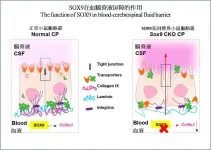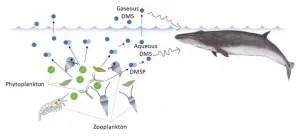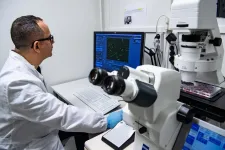Using landscape connectivity to control deadly mosquito-borne viruses
2021-02-24
(Press-News.org) The yellow fever mosquito (Aedes aegypti) is a main vector of deadly diseases like dengue fever, chikungunya, and the Zika virus, which result in hundreds of thousands of deaths worldwide each year. Because Ae. aegypti prefers to bite humans and there are no vaccines for many of these diseases they carry, developing methods to control these insects is imperative in the fight to control illness.
In a study recently published in Proceedings of the National Academy of Sciences, a Yale-led research team developed a new method to track how Ae. aegypti move through the environment. By combining genetic data from the mosquitoes and environmental data from satellites, the authors mapped "landscape connectivity" -- defined as how a landscape facilitates the movements of organisms and their genes across large areas. In particular, the researchers developed a new workflow that more effectively models how Ae. aegypti are moving through the landscape in the southern U.S.
"Connectivity maps allow managers to make informed decisions based on how mosquitoes are likely to move through a landscape," says Evlyn Pless, a postdoctoral researcher at the University of California, Davis and a PhD graduate of Yale's Department of Ecology and Evolutionary Biology. "Our results suggest that in the southern U.S., Ae. aegypti travels by a mix of natural and human-aided dispersal, taking advantage of regions that are warmer and flatter, as well as human transportation networks."
Plessco-authored the paper with Giuseppe Amatulli, a research scientist with the Center for Research Computing and the Yale School of the Environment; Norah Saarman, assistant professor of biology at Utah State University; and Jeffrey Powell and Adalgisa Caccone from the Department of Ecology and Evolutionary Biology at Yale.
Now, the most common method for controlling invasive, disease-carrying species like Ae. aegypti is by using pesticides, which are not eco-friendly. "We now know some pesticides cause environmental harm, including harm to humans," says Saarman. "At the same time, mosquitoes are evolving resistance to the pesticides that we have found to be safe for the environment.
"This creates a challenge that can only be solved by more information on where mosquitoes live and how they get around."
One cutting-edge method of control is releasing genetically-modified mosquitoes into existing populations, in an effort to stunt reproduction and spread of the disease. The authors say they expect connectivity maps like those they've created to be useful in designing more strategic releases of modified mosquitoes.
"By integrating machine learning with an optimization process, our approach overcomes constraints of previous methods and should be helpful for more precise planning of vector control actions," says Amatulli.
The authors also believe this novel advance could have broader applications, including in conservation and environmental protection.
"Connectivity maps can also be essential for the protection of endangered native species,'' says Pless, "for example, in designing corridors to connect fragmented populations."
INFORMATION:
ELSE PRESS RELEASES FROM THIS DATE:
2021-02-24
Live tracking and analyzing of the dynamics of chimeric antigen receptor (CAR) T-cells targeting cancer cells can open new avenues for the development of cancer immunotherapy. However, imaging via conventional microscopy approaches can result in cellular damage, and assessments of cell-to-cell interactions are extremely difficult and labor-intensive. When researchers applied deep learning and 3D holographic microscopy to the task, however, they not only avoided these difficultues but found that AI was better at it than humans were.
Artificial intelligence (AI) is helping researchers decipher images from a new holographic microscopy technique needed to investigate ...
2021-02-24
The finding, recently published in the prestigious scientific journal Proceedings of the National Academy of Sciences of the United States of America (PNAS), has provided the scientific community a novel understanding to the molecular regulatory mechanisms behind the function of the blood-CSF barrier and lays the groundwork for developing novel therapeutic strategies for preventing and treating neurodevelopmental disorders.
Dysfunction of blood-cerebrospinal fluid barrier is common in various neurological diseases
CSF is a clear, colourless body fluid that surrounds the brain and spinal cord, providing them a cushion against injuries. It also ...
2021-02-24
In Japan, the suppression of Christianity increased from the end of the 16th century to the beginning of the 17th century, and many missionaries and Japanese believers were martyred during this period. New research has uncovered a letter indicating that Hosokawa Tadaoki, lord of the Kokura domain from 1600 to 1620, ordered the execution of Diego Hayato Kagayama, a chief vassal of the Hosokawa family, and the banishment of Genya Ogasawara, both Christians. The punishment and martyrdom of both men was previously known only from reports by Jesuit missionaries to Rome. The discovery of primary historical documents created within the Hosokawa ...
2021-02-24
Integrated photonics was rejuvenated as Si starting challenging the dominant position of conventional III-V compound semiconductors at onset of the new millennium. Heterogeneous Si photonics utilizes wafer bonding to transfer functioning non-Si thin film onto Si substrate to make up missing or weak optoelectronic functionalities of Si material. In the past 15 years, it has evolved into a broad technology with many branches as shown in Fig. 1. As the most mature one among them, heterogeneous III-V-on-silicon integration provides an ideal platform to marry their respective material and production advantages. Two veteran researchers in this field, Dr. Di Liang from Hewlett Packard Labs and Prof. ...
2021-02-24
A joint research project between organizations in Japan and the US has demonstrated that zooplankton, a major food source for marine predators, can be located by following the concentration gradient of the chemical dimethyl sulfide (DMS) in ocean water and air. Currently, little is known about how marine predators search for and find enough food to maintain their body size. This study is expected to expand research into the chemical triggers of marine organisms while foraging.
Zooplankton, such as krill and copepods are the main energy source for many large marine animals. The big predators must consume a large amount of these tiny creatures to provide ...
2021-02-24
LOS ANGELES (Feb. 11, 2021) -- A new strain of the coronavirus in Southern California, first reported last month by Cedars-Sinai, is rapidly spreading across the country and around the world as travelers apparently carry the virus with them to a growing list of global destinations, according to new research published today in the peer-reviewed Journal of the American Medical Association (JAMA).
The strain, known as CAL.20C, was first observed in July 2020 in a single Los Angeles County case, as Cedars-Sinai earlier reported. It reemerged in October in Southern California and then quickly END ...
2021-02-24
Many materials in the modern world--from the plastics that dominate it to the electronic chips that drive it--are constructed of polymers. Given their ubiquity and the evolving requirements of our world, finding better and more efficient methods of making them is an ongoing research concern. In addition, current environmental issues necessitate the use of methods and input materials that are environment friendly.
Recent research by scientists from Nagoya Institute of Technology, Japan, has been in this vein, adding a new twist to a polymerization technique that has been around and successful since the 1980s: living cationic polymerization, where the polymer chain growth does not have the ability to terminate until the monomer is consumed. The scientists have, for the first ...
2021-02-24
New York, February 24, 2021 - Graduate Center, CUNY/Brooklyn College professor was part of a discovery of the first fossil evidence of any primate, illustrating the earliest steps of primates 66 million years ago following the mass extinction that wiped out all dinosaurs and led to the rise of mammals.
Stephen Chester, an assistant professor of anthropology and paleontologist at the Graduate Center, CUNY and Brooklyn College, was part of a team of 10 researchers from across the United States who analyzed several fossils of Purgatorius, the oldest genus in a group of the earliest-known primates called plesiadapiforms. ...
2021-02-24
According to a new study published in The American Journal of Human Genetics, more than one third of genetic variants that increase the risk of coronary artery disease regulate the expression of genes in the liver. These variants have an impact on the expression of genes regulating cholesterol metabolism, among other things. The findings provide valuable new insight into the genetics of coronary artery disease. The study was conducted in collaboration between the University of Eastern Finland, Kuopio University Hospital, the University of California Los Angeles, and the University of Arizona.
Coronary artery disease (CAD) and its most important complication ...
2021-02-24
Australian researchers have called for additional services for survivors of intimate partner violence - warning those who have these experiences are more vulnerable to elder abuse.
Women who survive domestic violence continue to experience negative effects well into their older years but they are also more vulnerable to elder abuse, says Flinders University researcher Dr Monica Cations, lead author of the study published in the American Journal of Geriatric Psychiatry.
"This is the first time this relationship has been demonstrated and tells us that older survivors need close monitoring and prevention efforts to keep them safe from further abuse."
The study looked at the psychological and physical impacts and risk for elder abuse associated ...
LAST 30 PRESS RELEASES:
[Press-News.org] Using landscape connectivity to control deadly mosquito-borne viruses




